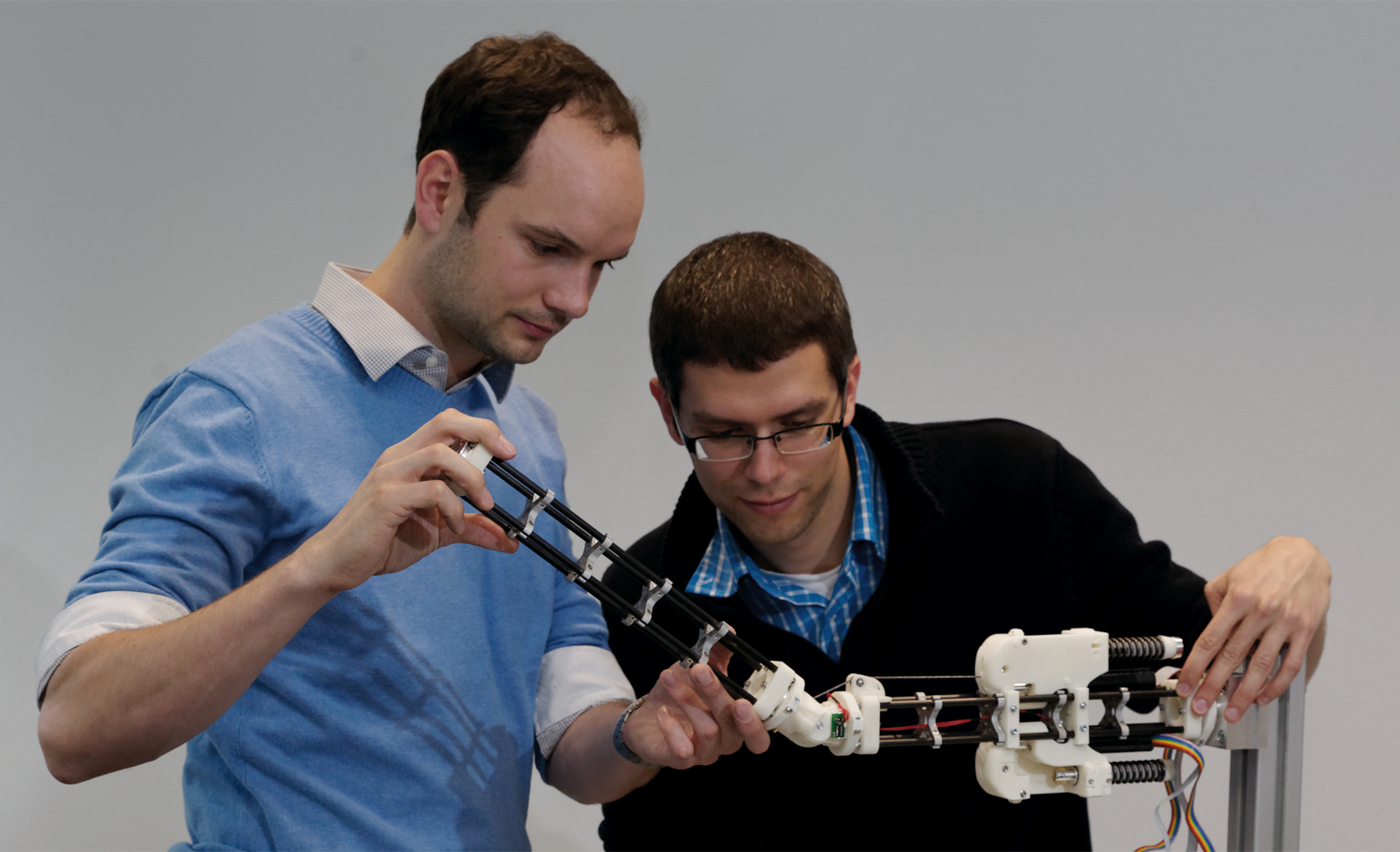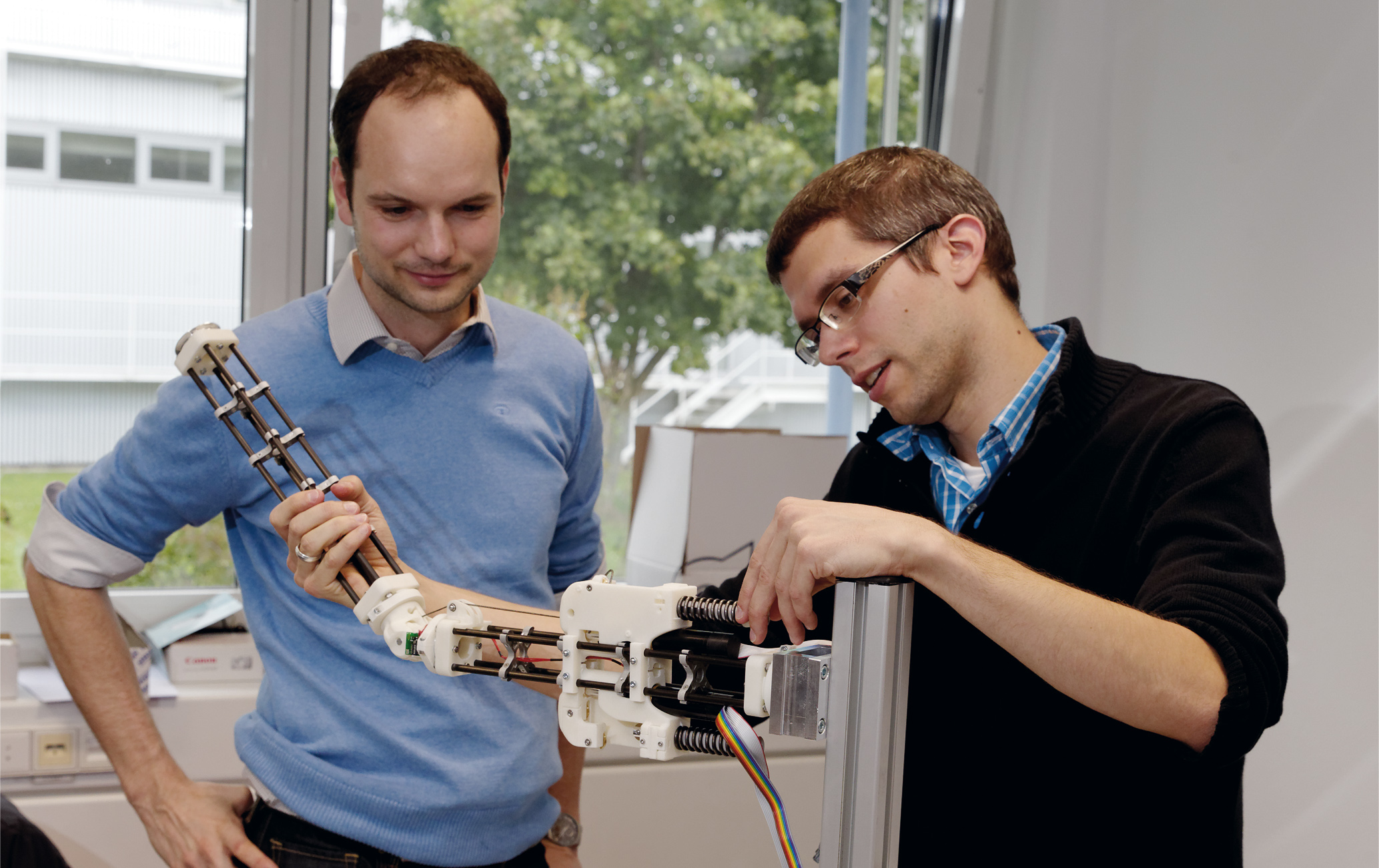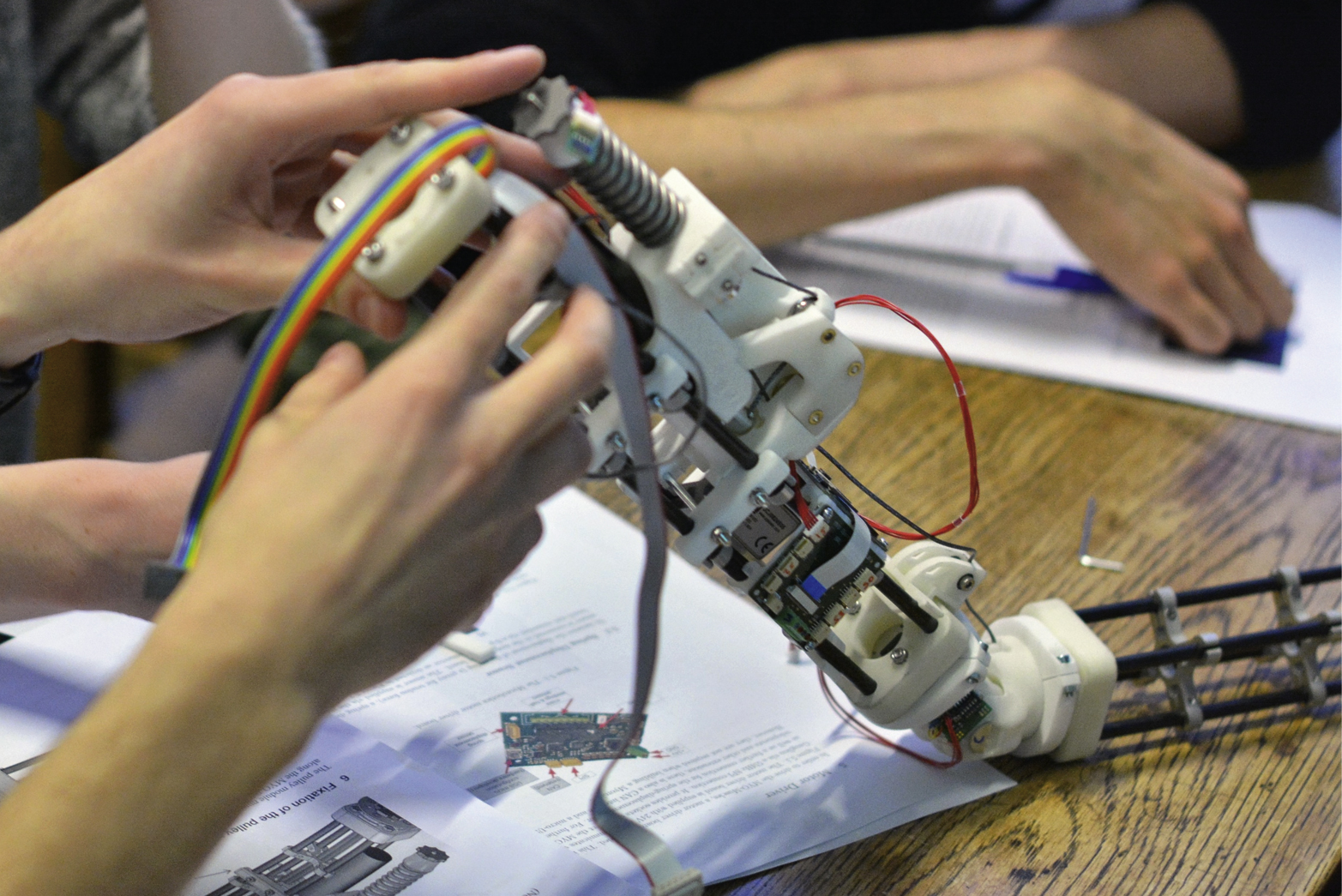Do-it-yourself toolkit for soft robotics
To work directly together with humans, a robot needs to be flexible and soft. Conventional systems are insufficiently flexible for this purpose. Scientists at Fraunhofer Institute for Manufacturing Engineering and Automation IPA see promising solutions in so-called soft robotics. They have developed hardware modules for a safe, flexible robot system and have made them publicly available in the form of a toolkit. Robotics researchers and developers can use the components to quickly and easily implement their own robot systems while benefiting from the knowledge of a growing community of developers.
With the kit it is possible to build robot systems with components that resemble biological limbs, such as arms and legs, in terms of their construction and operation. They have carbon-fibre-reinforced "bones" with built-on compliant "muscles", the force of which is transmitted by a sophisticated system of "joints" and "tendons". Sensors with local signal processing units allow the systems to perceive stimuli and to react to their environment in a reflex-like manner.
The advantages of flexible systems
Like the humans on whom they are modelled, the robots are capable of storing energy and absorbing impacts. They are thus designed to cope with unforeseen influences from their environment, such as when they are operated by hand. This makes direct interaction more pleasant and safer. In future, this technology will be able to be used in areas shared by humans and machines, such as household or rehabilitation robotics.
The toolkit is ready to use
Inspired by a biological model, the robot system is the result of the EU project "Myorobotics", in which Fraunhofer IPA was responsible for developing the mechanical hardware. The three-year project came to an end in February 2015. With the ready-to-use toolkit, the scientists have brought the project to a successful conclusion. The goal now is to present the concept to a wider audience, as well as to demonstrate and expand the diverse application possibilities.
From mid-March, the basics of the technology, such as files for 3D printing and the instruction manual for building the robot modules, will be freely available online to potential users. Alternatively, there are also plans to sell ready-to-use hardware components.
Wide circle of users expected
When designing the toolkit, the scientists selected easily available or producible components. In addition to being simple to assemble, the robot systems are of low-cost and modular. This allows users to put them together to suit their own particular requirements. The fact that the systems are easily configurable and simple to operate means that only little knowledge of robotics is required. This makes the systems attractive not only for roboticists, but also to a wider circle of users in research and development.
"The wider the circle of users, the more feedback we will receive on how to improve the toolkit," says Christophe Maufroy, project manager at Fraunhofer IPA, as he looks forward to the numerous experience reports he hopes to receive. "The goal is to widen our know-how and to increasingly adapt the technology to the needs of different users," adds Maik Siee, research fellow in the "Robot and Assistance Systems" department, in anticipation of future developments.


